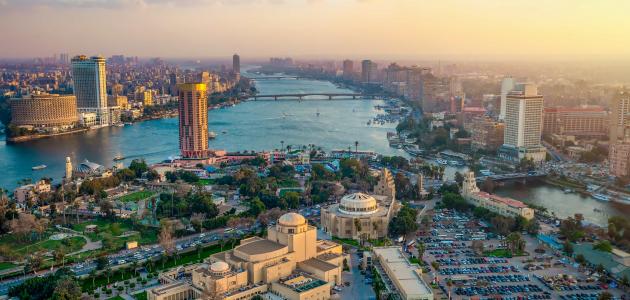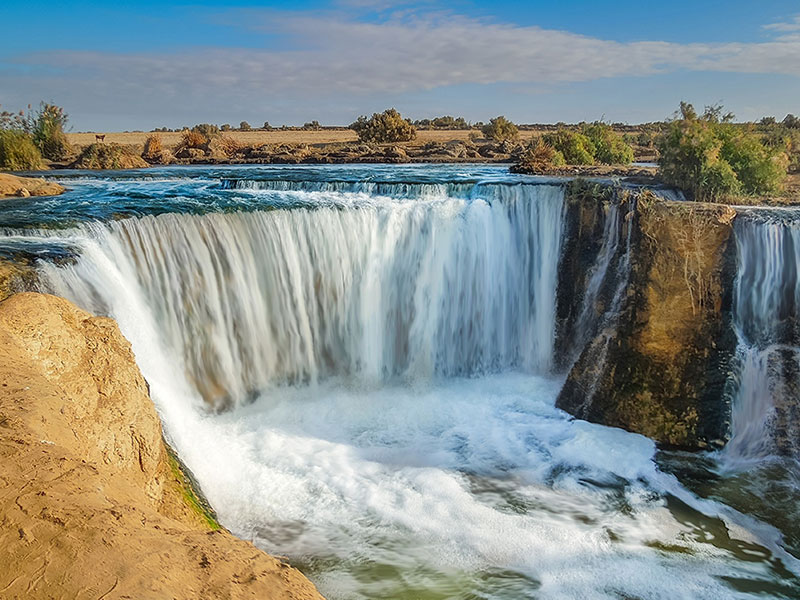It’s a short break trip to visit Egypt with the capital of Egypt (Cairo), and the second most beautiful ancient city in the whole world (Alexandria) which is established by Alexander the great

Day 1: Pharaonic Egypt
1st Stop: Giza Complex

The Pyramids of Cheops, Chephren, and Mykerinus discover the oldest of the Seven Wonders of the Ancient World, and the only one to remain largely intact. Egyptologists believe the Pyramid of Cheops (also known as the Great Pyramid of Giza) was built as a tomb for the Egyptian Pharaoh Khufo and constructed over a 14 to 20-year period in 2560 BC. During the Tour, you will ride your camel for 25 Minutes, your guide will help you to take some photos for your Trip. Note: There is possibility of entering any of the pyramids from inside the Great pyramid or any Pyramid of Giza you want also the solar boat you will be applied to but the tickets from the ticket office with your guide Museum, our tour is included for Camel ride
The Great Pyramid

The Great Pyramid of Khufu was built in 2600 BC to be his eternal resting place, and it eventually became one of the Seven Wonders of the Ancient World. It’s 147 meters tall, weighs six million stones, and is packed with a multitude of interior chambers The Great Pyramid of Khufu alone used over 2 million blocks of stone, each weighing between 25 to 80 tons. The three pyramids were mostly built using quarried at Giza, though they also used granite from Aswan and higher quality limestone from the nearby port city of Tura.
These stones were cut to be the same size and transported by boat down the Nile. Finally, they were assembled using ramps and levers to create the pyramids, masterpieces of technical skill and engineering.
The Valley Temple

The royal house of the mummification and purification of the valley temple came to be in the early days of the old kingdom (2686 – 2134 BC) to transform the bodies of the royal family into immortal figures.
The Great Sphinx
Colossal statues are one of the hallmarks of ancient Egyptian civilization, and the Great Sphinx of Giza is the most famous. It was carved directly out of the bedrock during the 4th Dynasty (c.2613–2494 BC), which also makes it the oldest. Ancient Egyptian sphinxes represented the king with the body of a lion, in a clear demonstration of his power.

The evidence points to the Great Sphinx having been carved during the reign of Khafre (Khefren to the ancient Greeks; c.2558–2532 BC), the builder of the second of the Giza pyramids. The Great Sphinx and the temple in front of it, called the Sphinx Temple, lie directly next to Khafre’s valley temple and the lower portion of the causeway leading up to his mortuary temple and pyramid. Careful archaeological analysis has revealed that the valley temple was finished before work was begun on the Great Sphinx and its temple. Analysis of the Great Sphinx’s facial features has also revealed striking similarities with those of Khafre’s statues.
2nd Stop: Saqqara Complex
Saqqara Pyramids

Saqqara is truly an open-air museum, one that has all of ancient Egyptian history on display. Kings and noblemen from the very first two dynasties (c.3040–2686 BC) were buried here, and this is also the location of the Step Pyramid of Djoser (c.2686–2667 BC). The pyramids of some of the most important kings of the Old Kingdom Fifth (c.2494–2345 BC) and Sixth (c.2345–2181 BC) Dynasties are located in Saqqara. One of these, the pyramid of Unas (also known as Wenis; (c.2375–2345 BC), features the oldest pyramid burial chamber decorated with texts. These are the so-called Pyramid Texts, the purpose of which was to protect the deceased king on his journey to the afterlife.
3rd Stop: Memphis

Then continue your day tour to Memphis City that was the ancient capital of Egypt, where the colossal statue of Ramses II and the great Alabaster Sphinx are. This City Dates back to 3100 B.C. During Egypt’s Old Kingdom period, Memphis, located near Cairo, was home to the pharaohs who built the pyramids. But domestic architecture didn’t last like the pyramids did, so most all that remains of Memphis today is the Mit Rahina open-air sculpture museum.
At the end of the Tour, you will be transferred back to your Hotel
Day 2: Coptic Cairo and Museum of Egyptian Civilization
1st Stop: Coptic Cairo

Coptic Cairo is a part of Old Cairo which encompasses the Babylon Fortress, the Hanging Church, the Greek Church of St. George and many other Coptic churches and historical sites. It is believed in Christian tradition that the Holy Family visited this area and stayed at the site of Saints Sergius and Bacchus Church (Abu Serga). Coptic Cairo was a stronghold for Christianity in Egypt until the Islamic era, though most of the current buildings of the churches in Coptic Cairo were built after the Muslim conquest of Egypt in the 7th century
2nd Stop: The National Museum of Egyptian Civilization

The National Museum of Egyptian Opened in 2017, the National Museum of Egyptian Civilization (NEMC) is the first museum to tell the story of Egypt all the way from the times before the pharaohs to the present day. Civilization, the first Museum focusing on the earliest civilization in history across various key historical phases, starting with the pre-dynastic and ancient Egyptian periods and continuing across the Greco-Roman, Coptic, Islamic and contemporary modern times.

NMEC is the first museum in the Arab world focusing on the earliest civilization in history – the ancient Egyptian civilization. It is the only museum in Egypt that offers the visitor a general overview of all the different historical periods that encompass Egypt. This has been approached as a layered cumulative product regarding the interaction of the Egyptian people with their land throughout history. This has been created via a multidisciplinary a thematic approach designed to highlight Egypt’s tangible and intangible heritage. In addition, NMEC is an important cultural, educational, recreational, and research center for local and international visitors and scholars.
NMEC exhibits several objects intended to educate the visitor about the Egyptian civilization across various key historical phases, starting with the Predynastic and Ancient Egyptian periods, and continuing across the Greco-Roman, Coptic, Islamic and contemporary modern times. NMEC is located at the heart of Al-Fustat, the ancient Islamic capital of Egypt, and is surrounded by several religious complexes.
Day 3: Islamic Cairo
1st Stop: Citadel of Saladin

The Citadel of Sultan Salah al-Din al-Ayyubi (Saladin) is one of the most iconic monuments in Islamic Cairo, and among the most impressive defensive fortresses dating to the middle Ages. Its strategic location on the Muqattam Hills gave it a formidable defensive position, and offered, as it still does today, an unrestricted panoramic view of Cairo.
Sultan Salah al-Din al-Ayyubi was the first to order the construction of a fortress over the Muqattam Hills in (572 AH/ 1176 AD), but it was not completed during his lifetime. This was achieved during the reign of Sultan al-Kamel ibn al-Adel (604 AH/1207 AD) who decided to reside in it, making it the official residence of the rulers of Egypt. In the mid-nineteenth century, Khedive Ismail moved the official residence to Abdeen Palace in downtown Cairo.
The Mosque of Muhammad Ali

is located inside the Citadel of Salah al-Din al-Ayyubi (Saladin) in Cairo. It was built by Muhammad Ali Pasha in 1265 AH\ 1848 AD on the site of Mamluk palaces. This mosque is known as the “Alabaster Mosque”, in reference to its marble paneling on its interior and exterior walls. The mosque’s twin minarets are the highest in all of Egypt, each reaching a height of 84 meters.
The mosque was built on the Turkish style that consists of an open court and prayer hall. The prayer hall is a square space that surmounted with a large central dome which surrounded by four semi-domes and four shallow domes in the corners. There are two minbars (pulpits) inside the mosque. The original of the two is made of wood decorated in green. The other was a later addition made of marble.
2nd Stop: Mosque and Madrasa of Sultan Hassan

The Mosque-Madrasa of Sultan Hassan is a monumental mosque and madrasa located in the historic district of Cairo, Egypt. It was built between 1356 and 1363 during the Bahri Mamluk period, commissioned by Sultan an-Nasir Hasan
3rd Stop: Al Rifai Mosque

Al-Rifa’i Mosque is located in Midan al-Qal’a, adjacent to the Cairo Citadel. Now, it is also the royal mausoleum of Muhammad Ali’s family. The building is located opposite the Mosque-Madrassa of Sultan Hassan, which dates from around 1361, and was architecturally conceived as a complement to the older structure
Day 4: Alexandria
1st Stop: Catacombs of Kom el Shoqafa

The old Catacombs of Kom El Shoqafa are an extremely well preserved and fascinating mix of different ages with Pharaonic and Roman dedications to the dead. Found purely by an accident with a donkey falling through a hole in the ground in 1900, these sets of rock cut burial chambers and tombs.
2nd Stop Pompey’s Pillar

You will also drive by Pompay’s Pillar and stop for a photo stop, (it was constructed in honor of the Emperor Diocletian at the end of the 4th century)
Situated centrally in Alexandria, Pompey’s Pillar towers over the surrounding buildings as a reminder of the once great power of the Roman Empire
3rd Stop: Citadel of Qaitbay

Opposite is the corniche and the old harbour where you can see the old fishing boats, men fishing and traditional fishermen making nets. The photos taken here are amazing. Opposite is the corniche and the old harbour where you can see the old fishing boats, men fishing and traditional fishermen making nets. The grand citadel of Qaitbay is a 15th-century defensive fortress located on the Mediterranean Sea coast, in Alexandria, Egypt. It was established in 1477 AD (882 AH) by Sultan Al-Ashraf Sayf al-Din Qa’it Bay.The photos taken here are amazing. Continue to see the outside of Quaitbay castle which was built on the same site as the ancient Lighthouse of Alexandria one of the seven wonders of ancient world. A most spectacular castle which is a great photo stop
4th Stop: Bibliotheca Alexandrina

Next stop is the library of Alexandria; the biggest library in the world –Visit its open court where you can see the statue of Alexander the Great and the statue of Ptolemy the first, which was found underwater nearby. You will visit president Saddat Museum and impressions of Alexandria Museum. Note: Alexandria library is closed on Fridays, Saturdays & in public holidays. To enter the reading area you will need to purchase a ticket. (Optional) the library’s manuscripts museum,


